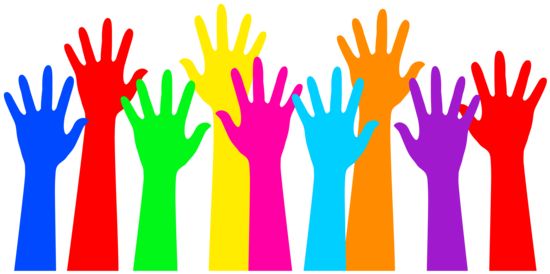I am nine years old and about to audition for Tom Sawyer. I’m at a semi-professional children’s theater in Palo Alto, California, where my family is living for the year as part of my father’s sabbatical. There are two lines: boys and girls. Tom and Becky. I’m preparing to read for Tom. I wouldn’t sneeze at Huck, but Tom is the lead, and I’m a star. I read the lines aloud to myself, trying on different inflections, looking for the laughs. I’m a good reader and a consummate professional. Standing in line, I practice my confident Tom Sawyer swagger, making sure to appear tough and playful with a few moments of vulnerability. Tom wants to show Becky he can paint the fence, but deep down he doubts himself. I decide on my motivation: To get into Becky’s petticoats.
“My name is Judith Dry, and I’ll be reading for Tom.”
I hear my name and walk confidently onto the empty stage, next to the Becky from the girls’ line. I’m nervous, but prepared.
“My name is Judith Dry, and I’ll be reading for Tom.”
I begin, seamlessly transitioning from my introduction into the opening line, when a man’s voice interrupts me.
“Stop, stop, stop! Wait a minute, what did you say your name was?”
“Me?” I ask, the butterflies in my stomach swarming. “Judith Dry.”
“You’re in the wrong line. Go back and get in the Becky line.”
I can’t see his face; he’s sitting halfway back in the house, and the stage lights are shining in my eyes.
“I want to read for Tom,” I manage to chirp out, hiding my wavering voice.
“But you’re a girl,” the disembodied voice yells.
“I know, but…” My throat closes up as I force out one final protest, blood rushing to my pudgy cheeks as I will myself not to cry. Boys don’t cry.
“You can read for Becky.” He yells, “Bring out another Tom!”
A boy hustles onstage. I move aside and muddle through the scene, reading a part I did not prepare and do not want. Even so, I can play Becky; I’ve been playing a girl my whole life.
When I finish, I rush to the holding room; collapse onto my mother’s bosom and burst into tears. Jewish mothers have the warmest bosoms for drying tears, and the chilliest stares for the people who make their kids cry. When I tell her what happened, she is irate, but not surprised. She doesn’t tell me that though. She just takes my little hand and we walk out together, our heads held high.
Teaching as a “Tomboy”
Fifteen years later, I am teaching archery at an after-school program in the West Village, Manhattan. I am not the celebrated Broadway star I thought I’d be at nine years old. Instead, I eke out a living with freelance writing and part-time teaching. Christine, a willful eight-year-old twin I’ve known since she was five, asks me if I am a tomboy.
“What do you think?” I ask back, guessing she knows the answer.
“I think you are.”
“I am,” I say, and she nods curtly.
“I thought so. I am, too,” she says proudly, walking back to the lunch table where she is sitting with a few girls. Sensing an in, I sit down next to her, my butt hanging off the tiny seat. For a second, I forget I am a grown-up and am surprised I don’t fit.
“What does being a tomboy mean to you?”
“It means you’re a girl, but you like boy stuff. Like, you like to wear boy clothes and play sports and act like a boy. My mom doesn’t like it, she says I’ll grow out of it.”
Here is the teaching moment I have dreamed about for years. Batter up.
“I think it’s great that you’re a tomboy,” I say. “I love being a tomboy. And your mom can’t tell you who to be. I promise, she loves you no matter what.” I put my hands on her shoulders and make eye contact, as if I could beam the importance of this point into her little brain with my eyes.
“Yeah, I guess,” she says with a shrug, turning back to her fluffernutter sandwich.
Learning My Own Gender
I identify as trans, in the broad sense of the term. I’m proudly under what GLAAD calls the transgender umbrella, which encompasses the myriad identities for people whose gender deviates from their assigned sex at birth. I was assigned female at birth, but I identify most with masculinity.
“Transmasculine” is another umbrella term for people like me. I also like “Masculine of center,” another umbrella term, which was coined by B. Cole of the Brown Boi Project. (People on the feminine side of the spectrum might use transfeminine or Feminine of center.) It can be difficult to pin down one’s gender identity into one catch-all term. This is why we like umbrellas.
I don’t simply say I am a trans man because I currently have no plans to transition medically, and I hope to challenge the notion that one must transition to be considered trans. I lightly bind my chest, and twenty years later, I still walk with a confident Tom Sawyer swagger. I am well aware that most people read me as a lesbian, but they are wrong. Lesbians are women by definition, and I am not a woman. I am queer, and the resurgence of that word in recent years—while initially a reclamation of a slur—is also due to its gender neutrality. If it all sounds complicated to you, imagine how it feels to me.
I get mis-gendered every day, and I still feel abnormal, small, and invisible from time to time.
Funnily enough, my students couldn’t care less about the words I use to describe myself, and I am fine with that. Christine used the language she knew to ascertain my gender identity; tomboy has always been a socially acceptable term for a boyish little girl. (As long as she grows out of it by high school.)
I offer up this story about Christine not to show how wonderful a teacher I was in that moment. In fact, I probably tried too hard. As for the theater director, there were many other times in my childhood when adults questioned my gender presentation. They made me feel abnormal, small, and invisible, which is another way of saying they did not see me—not as I saw myself, anyhow. I get mis-gendered every day, and I still feel abnormal, small, and invisible from time to time.
I offer up these stories to show how deeply painful one teacher’s words were. Preconceived notions of gender are like a thick fog that has always been there; we will only notice how much we weren’t seeing when it finally lifts. Those who defy gender roles may stick out like a sore thumb. As teachers, we may never know when we are making a student feel abnormal, small, or invisible.
I take solace knowing that simply by being my visible self I am teaching my students that it is okay to play with gender identity and presentation.
What can teachers do to support gender-variant students? First of all, it’s important to realize that dismantling the gender binary may be beneficial for everyone, not just gender-variant students. The sooner that the most aggressive, rambunctious little boy feels free to cry when he needs to or to hug his male friends, the less likely it is that he will grow into a violent, angry young man. The sooner a little girl feels comfortable wrestling with boys or speaking out of turn, the more forcefully she will shut down men who would dare interrupt her in a meeting. And for the trans student who feels abnormal, small, and invisible, a gender fluid learning environment could mean the difference between life and death.
Tips for Teaching
I don’t have all the answers, but I can offer a few small tips and ideas teachers can implement right away to make classrooms inclusive of all gender identities. Some are easy to do, and others are highly aspirational. It’s okay to mess up; I even mess up my own pronouns on occasion. What’s important is that we all try.
Eliminate gendered nicknames, like “buddy” and “dude.”
A high school teacher friend once told me she calls every student “honey.”
Challenge gendered statements when you hear them.
“Boys are gross” or “girls are emotional” may seem like innocuous things kids say, but they create a great opportunity to question students’ assumptions about gender.
Call yourself out.
Much like with internalized racism, internal gender biases are common, and we’re often not aware of them. Notice the little ways you treat boys and girls differently, and the assumptions you make about students based on their perceived gender. Are you more likely to pair two girls for a project? Do you tolerate speaking out of turn in boys more than in girls? Do you compliment girls’ clothing? If you can’t nix the behavior, start by taking note when you do it.
No more “boy, girl, boy, girl,” seating arrangements, or “boys’ line, girls’ line.”
Sometimes kids break off into gendered groups, and that’s okay. If it happens naturally, what’s wrong with it? If you insist one student join another group, you call attention their gender in that moment, which could be potentially traumatizing for a gender-variant student. If a girl wants to join a boys’ group, or vice versa, they will ask.
Ask students’ their preferred gender pronouns.
This may be difficult with younger students, but by middle school, students should be able to identify themselves with preferred pronouns.
Use the neutral “they” for everyone.
This one may be hard for teachers, but I found it took me about a week to get used to using the singular “they.” Begin by using it with friends casually, and you might be surprised how quickly it starts feeling natural. By using it for all students, you normalize the gender-neutral pronoun for trans and gender-variant students. In doing so, you make your classroom a safe space where no one will ever feel abnormal, small, or invisible.
Jude Dry is a film and digital media critic for IndieWire. They taught writing and archery in a New York City public elementary school for six years. As a songwriter and comedian, Dry has performed at theaters such as Ars Nova, Dixon Place, and The Slipper Room. Dry lives in Brooklyn, New York.



